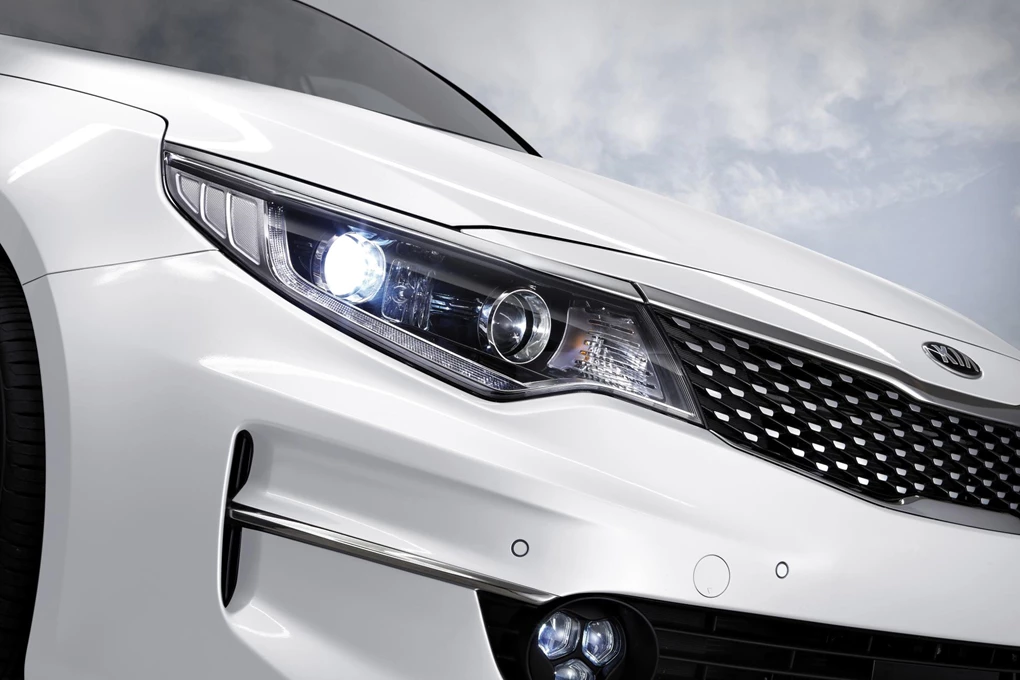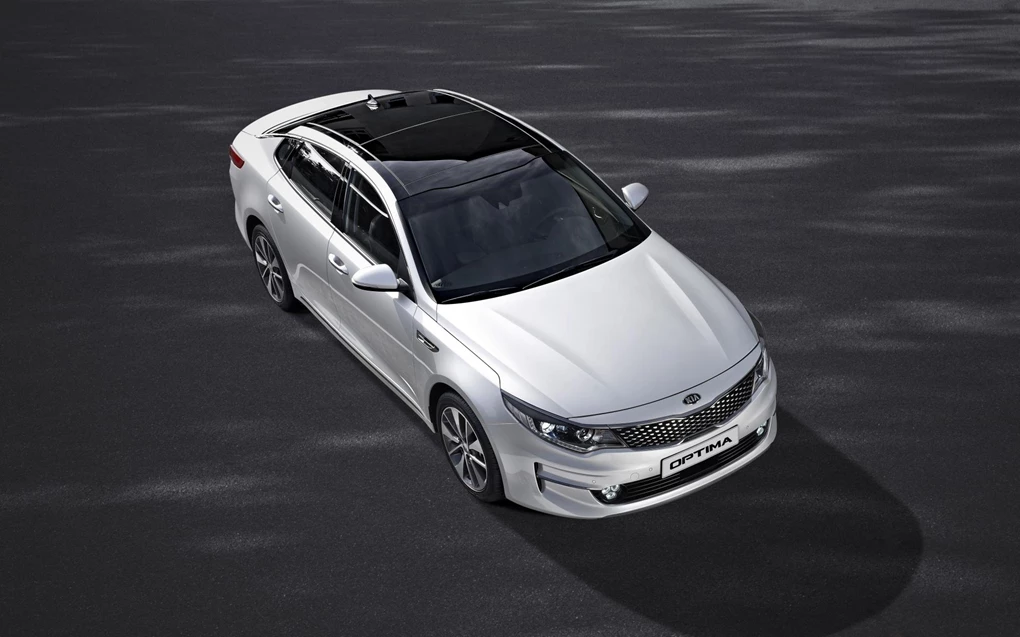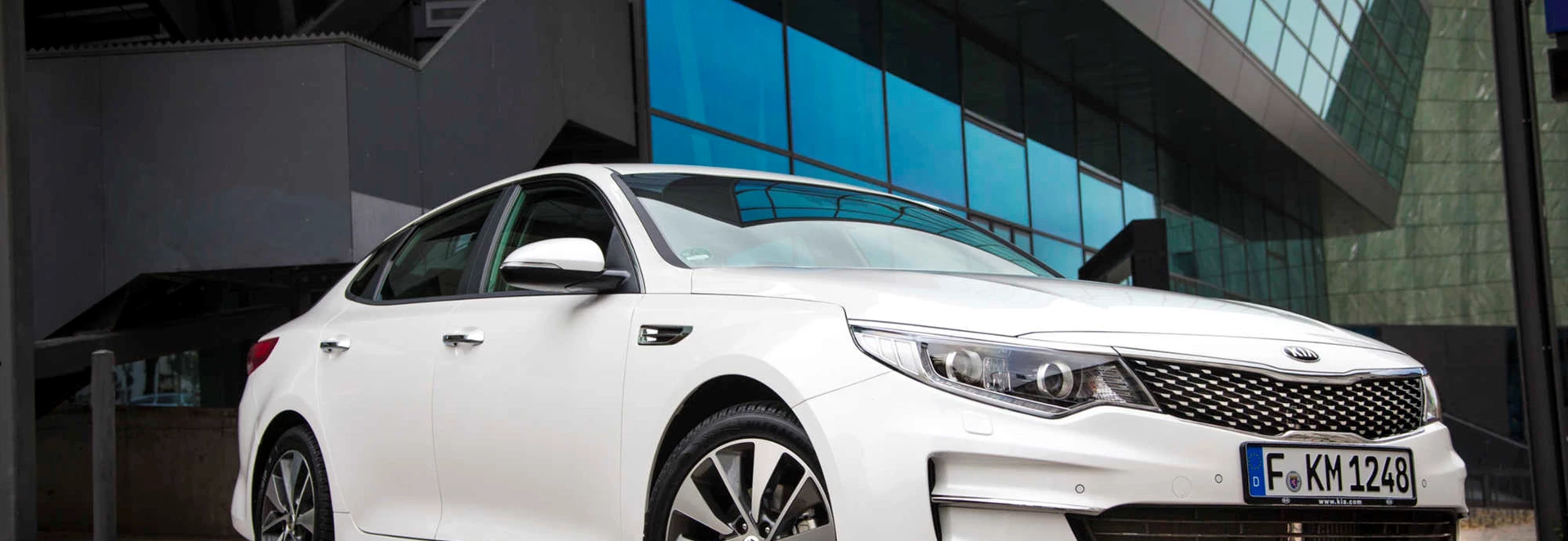Kia has recently upped its game and become one of the UK’s mainstream manufacturers, making a mark in several of the market’s lucrative segments – its Sportage crossover SUV being a particularly big success. Success in the saloon segment however, has somewhat eluded the South Korean carmaker.
That’s not been from lack of trying though, with its Optima saloon launched into UK showrooms in 2012, with an updated model following two years later. Although the Optima has been available since 2012, it hasn’t quite caught on as much as the brand would have liked. But that may all be about to change with a new 2016 fourth-generation model.
Kia has really tried to hone in on polishing areas in need of improvement with its new model. It’s now more economical, powerful, luxurious, stylish and comfortable. And it is improvements like this that will help it battle the likes of the Ford Mondeo and Skoda Superb.

Performance
There is still just one engine available, a 139bhp 1.7-litre diesel. This comes with 5bhp more than before and, most notably, an improved 0-60mph sprint time of just 9.7 seconds.
Power from this unit may not be as obvious as some of its competitors, but you will be surprised how nippy it actually is, especially when you drop a few gears and put your foot down. Overtaking is easier than you think as well, with 340Nm of torque at your fingertips when you hit around 2,000rpm.
The six-speed manual gearbox available is fairly sharp as well, although the Mondeo’s manual is snappier. There is also a seven-speed twin-clutch automatic available. Top speeds for the manual and auto are quoted at 121mph and 126mph respectively.
Ride and Handling
Kia has tweaked the chassis of the Optima as well to improve the ride quality, which is now more composed over lumps and bumps in the road
The Optima’s steering has noticeably improved since its last-generation. It doesn’t quite have the same feel as the new Kia Sportage or Sorento, but its electrically-assisted set-up is fairly responsive in its ability to weight up at higher speeds. Our main complaint with it however is its overtly light feel at lower speeds. Kia’s variable driving modes are available, but you will have to specify them. Kia has tweaked the chassis of the Optima as well to improve the ride quality, which is now more composed over lumps and bumps in the road, delivering a much more comfortable experience. The payoff is an uninspiring experience on twisty B-roads, but that’s not the Optima’s USP anyway.

Interior and Equipment
Optima is a relatively new name to British customers, but this saloon’s predecessor - called the Magentis here - used the Optima name in other markets.
Kia has clearly revaluated the Optima’s interior design with a completely revamped look. What once looked like it could have been the interior of any Kia now looks like an up-market saloon. The dashboard is dominated by a swooping fascia that is split into three ergonomically-sound layouts of buttons. Together with soft-touch materials and a comfortable driving position, it’s hard to fault the Optima’s interior. Standard kit on the ‘2’ trim level (not sure why there isn’t a ‘1’ trim anymore) is impressive too with sat-nav, a reversing camera with sensors, cruise control, Bluetooth and dual-zone climate control. Practicality is impressive all-round, with plenty of cubby holes and cup-holders up front as well as tons of rear passenger space. The process for folding the rear seats down is a bit fiddly though, as you have to go around to the boot to pull and lever and then return to the rear seats to physically pull them down. The boot’s size of just over 500 litres is impressive, albeit smaller than the competition. The boot’s opening is rather narrow too, which makes loading large objects in a bit of a pain.
Cost
The 1.7-litre diesel now emits 110g/km of CO2 in the manual and 116g/km in the automatic - a massive improvement over its previous minimum figure of 128g/km.
Although performance figures have risen, efficiency has followed suit. The 1.7-litre diesel now emits 110g/km of CO2 in the manual and 116g/km in the automatic - a massive improvement over its previous minimum figure of 128g/km. Fuel economy has also improved as it now claims an average of 67.3mpg, up from 57.6mpg. This is under perfect conditions however, expect closer to mid-50s in day-to-day driving. What may deter potential buyers is the Optima’s list price. At £21,895 the Optima is more expensive than the Ford Mondeo and Skoda Superb. It does come with oodles of standard kit and a seven-year warranty though.
Our Verdict
If you are after a comfortable, well-equipped, stylish saloon then the Optima should certainly be on your shortlist. It’s not a clear go-to saloon option, but if you want something a little different that doesn’t skip on quality, then the Optima is spot on. Fans of other brands like Ford and Skoda may find it difficult to be instantly won over by it though due to its high list price. Do the maths though and you might be surprised how much the options fitted on a standard Optima will actually end up costing you on one of its rivals. The Optima is not perfect, but it is certainly on the right track. The latest-iteration shows promising signs for the future of Kia’s saloon contender.





